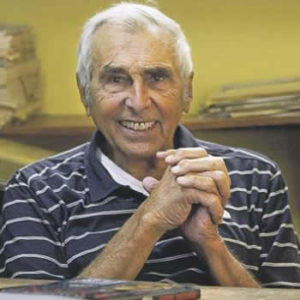Every century has its memorable years—think your birthday. The ’20s had 1927 (Lindbergh), 1928 (Mickey Mouse and Oscar), 1929 (Crash). And then there was 1968 (Nixon, Humphrey, Chicago) Martin Luther King and Bobby Kennedy. Kent State. The Kerner Commission. 1941 (War). 1945 (Peace). And the Columbia University Bust in April 1968.
Columbia University is an elite enclave in the heart of Manhattan’s Harlem. Its campus is a kind of self-contained, isolated outpost, surrounded by a lot of apartments housing faculty. It is a gem of the Ivy League, vying with Penn, Princeton, Yale and Harvard. Eisenhower was once its president (Princeton had Wilson and Harvard everyone else).
In 1968 Columbia decided to build a gym and easily secured the city’s permission to expand into Morningside Park—a small oasis in Harlem. Black and white students sat in, in protest, occupying the dean’s office and other buildings. My recollection is that the dean bore the ironic name of Truman.
The white demonstrators were entitled, arrogant, insufferable, cossetted young snot-noses who insulted the police. We were angry and, with the school’s enthusiastic backing, planned a raid.
In late April we stormed in, batons flashing, gaseous fumes clouding and arms flailing as we arrested scores of the scions of the privileged. The black students were merely surly and didn’t provoke the animus the white militants managed, but they were collared as well.
The buildings were cleared, peace restored, and, except for a critical study of the event, the dust settled.
I was perfectly content with our action and my role. At that time I had power and influence way above my deputy inspector’s rank since I was the aide of the NYPD’s highest ranking officer.
And, then, as it does, time passed.
The one thing I’d learned (I was 40) was the value of reflection, and I pondered the issues.
Gradually I discovered I—and all my colleagues—had responded to the externals—the snotty nosed insulters, and not their actions—defense (successful, as it turned out) of the black community’s small park. A pretty tortured epiphany, even if essential.
Seven years later I was in command of Bronx forces. 1975. The students at Lehman College sat in to protest tuition hikes. I met with the president, an idiot fascist. He wanted them arrested. But they’re kids, I said. No, they’re not, they’re Vietnam vets, the president responded.
I established a liaison with the sit-ins, advised them to assault no one and destroy no property, and I’d try to let them stay.
The school head was furious. He called my bosses, but I put him off. I was temporizing and massaging. Finally, the president went to court and the judge said, “I note Chief Bouza is in the courtroom.” (I was sitting in the back.) “He knows his duty and I don’t have to remind him of it.”
The die was cast. I was forced to act after about six weeks of the sit-in. I told the demonstrators we’d be around at about 3 a.m. and arrest those who remained. Resisters would face an additional charge. About 34 were collected and the story was a squib on page 28 (or so) of The Times. A very peaceful end.
Tony Schwartz made a radio tape of the event, recording (separately and without identities) me and the president. All listeners identified the president as a routine cop—fascist—executive and me as the wooly-headed, liberal academic.
And so ended the legacy of the Columbia Bust, at least partially redeemed.























